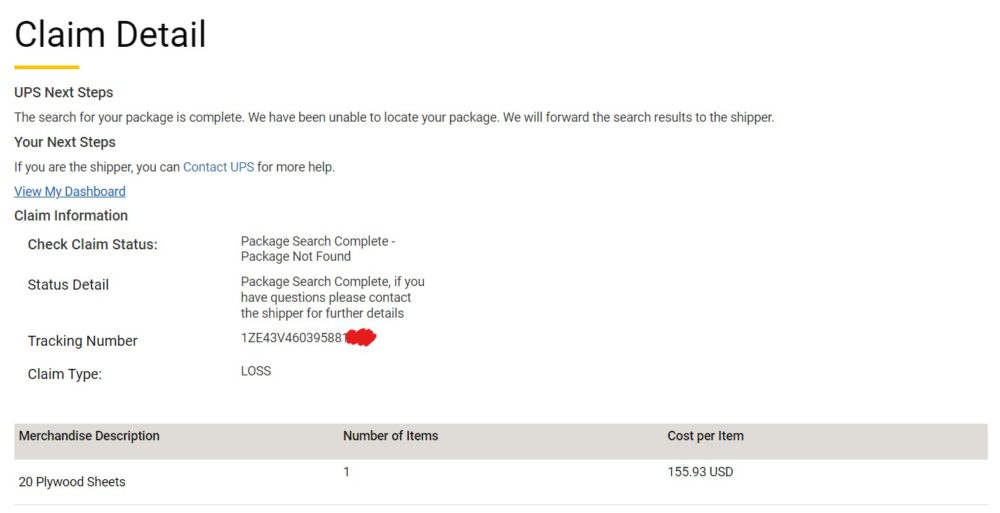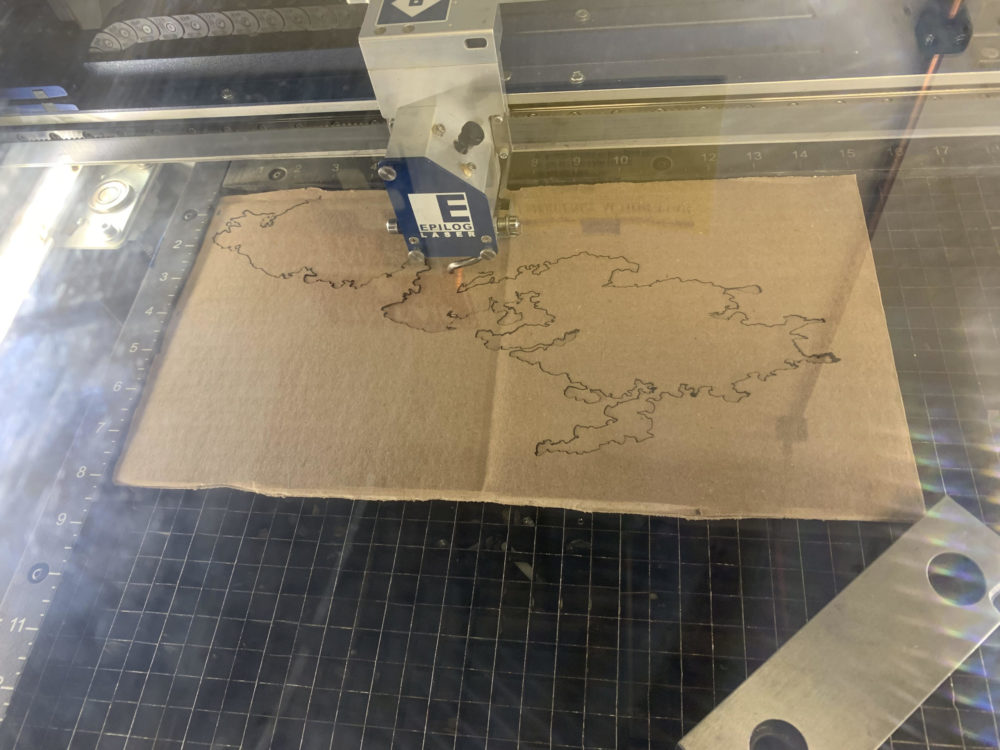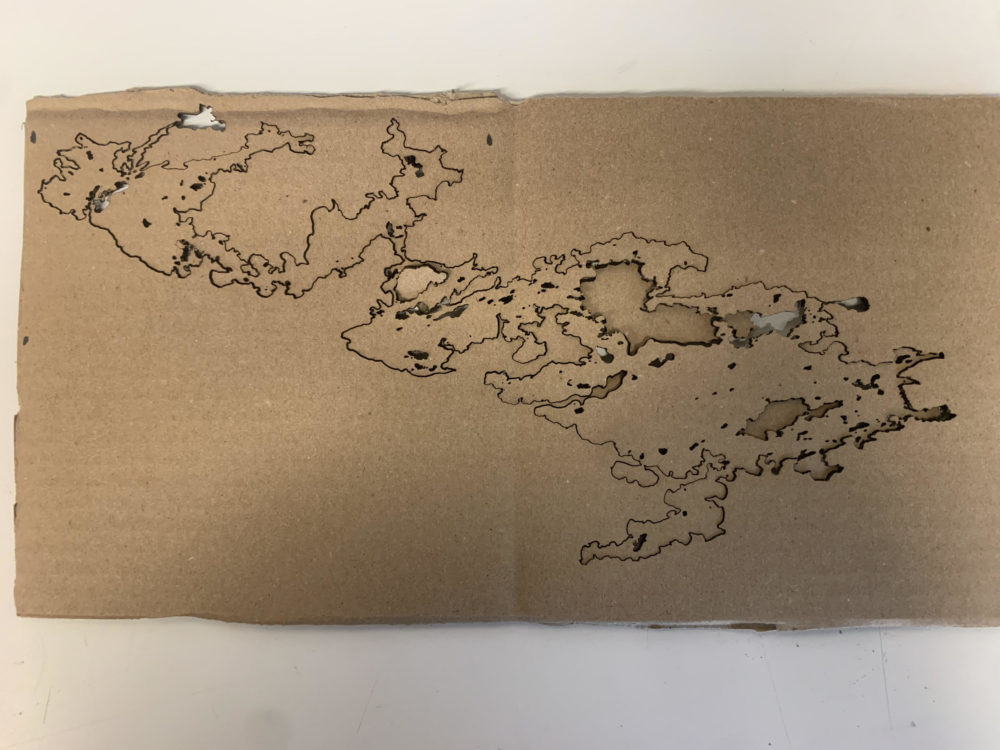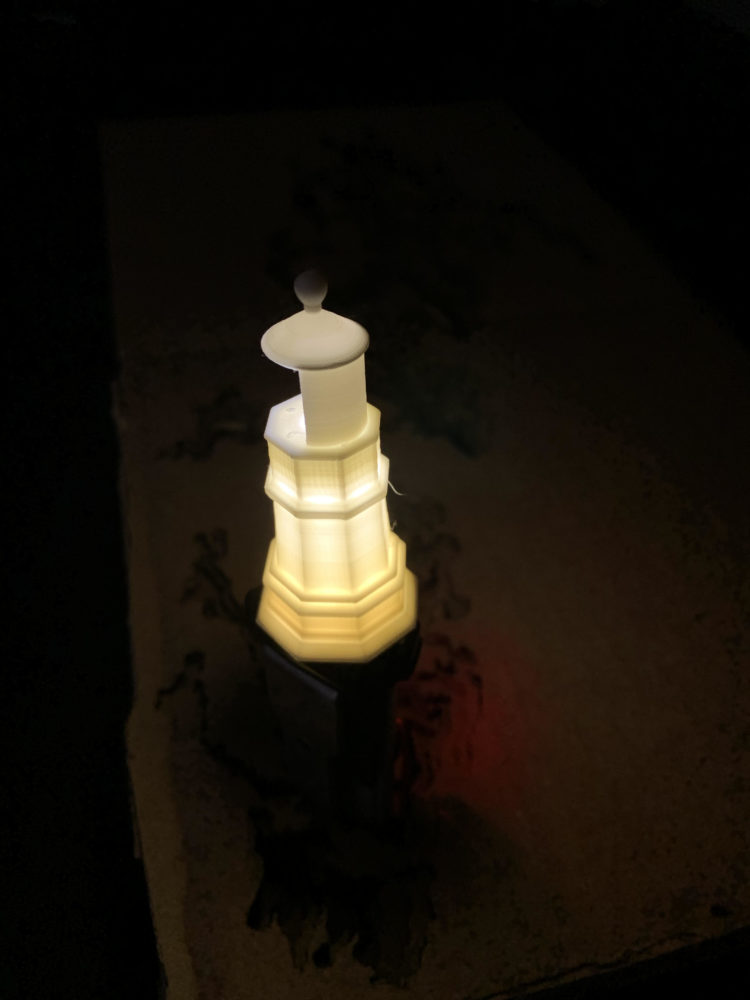My ‘wood’ bathymetric map is ‘done’. Unfortunately, I ran into issues with UPS delivering my wood, so plans had to change.

For this project, I set out to create a Wood Bathymetric Map of Lake Vermilion, MN. The aesthetic of ‘wood bathymetric maps’ had a large, but niche following in creating stunning visual displays of lake depth out of laser cut wood. This creates a tabletop or wall hanging display. My vision was to create this of a lake familiar to me, Lake Vermilion. I could have purchased this map from various shops on Etsy for upwards of $700. Desiring to create my own, I set out to do it myself. I wanted higher accuracy than offered online, as well as at a lower cost.

My plans took a turn when UPS lost my 20 sheets of ¼” Baltic birch plywood in their Commerce City, Colorado warehouse. This greatly upset my project. Instead of creating a very nice keepsake, I now have created a prototype quality version out of cardboard.
Using five layers of cardboard, I used 10-foot contours, instead of 2.5 feet as originally planned. This was simplified to limit the time spent on a simple cardboard model. The project was also scaled down. Instead of filling my 12”x20” Baltic Birch sheets, I made the lake just 14”x7”. This saves on cardboard and cutting time. This scale made many of the small islands just pencil dot sized. This reduced the accuracy that I had planned on the wood model. Cardboard also played a large effect on the quality, firstly by being cardboard, and not fine wood sheets. The second cause is that cardboard burns much easier than wood. The bottom of the cardboard would smolder, changing the edges of each layer, distorting the accuracy. The third reason is cardboard’s hollow structure. This makes the edge of the layers look as if there are two layers or distorts where the layer actually is.

My dynamic component, an LED flashing lighthouse is very large compared to the smaller scale. It was going to be disproportionate with the original design, but it is now very big. I like how it turned out though. It is a neat stand-alone model. My LED module, a repurposed bike light, is not too tall to mount to the side of the project because there are few cardboard layers, which are also thinner.

Overall, this project is just a stand in for what I originally hoped to build. I am very disappointed that the wood was lost in transit. It was so amazing to see this take shape, even with cardboard. I had been working on processing GIS data for this project since January. Although I got the chance to create it, it’s nothing like what I hoped to make. My next steps are to continue to work on getting a refund from UPS. With this being an excellent prototype, I still learned a lot on what to improve if I ever get a chance to make a wood version.

2 Comments. Leave new
Hi Alex, I really like your project and am sad to see it get put on hold due to shipping issues! I think that while it wasn’t ideal, it looks like your transition to cardboard went relatively well. I quite like the location that you chose and your design of the lighthouse. I think that it provides an interesting contrast to the cardboard, or in the future, wooden map. Hopefully you are able to get new material to fully realize your vision. What improvements would you make to your design now that you have had a chance to create a prototype version?
Hi Alex, I find your project really interesting and I want to applaud you for being able to finish and make do with what materials you had. Unfortunately, I also ran into a bunch of shipping and material issues and had to make do with everything I ended up with. While this obviously is not ideal, really enjoyed that you are able to focus on the benefits of this situation and how this artifact can be improved in the future.